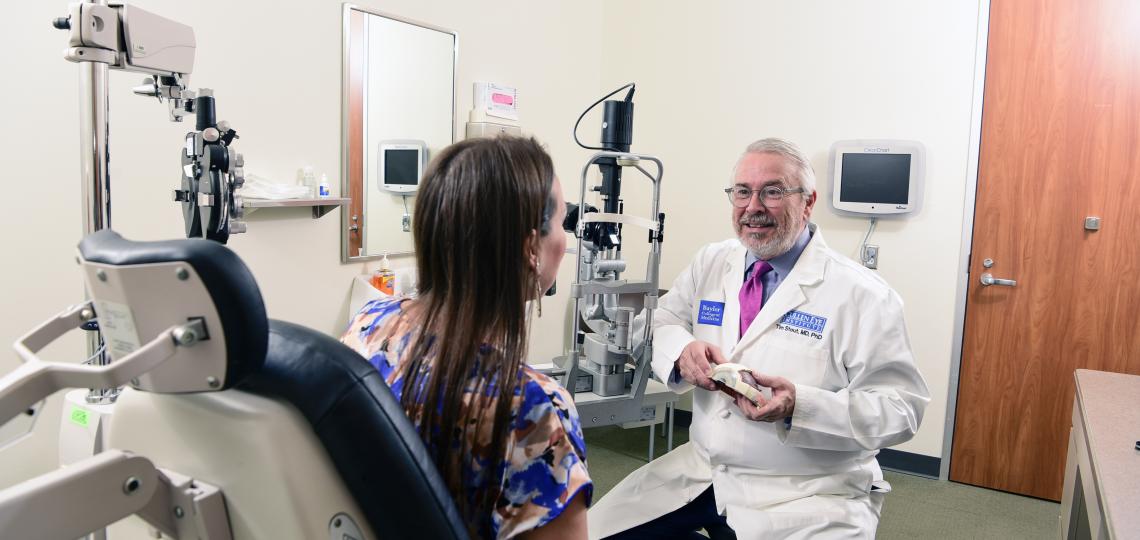Andalusia Eye Facility: Premier Services for Vision Improvement
Andalusia Eye Facility: Premier Services for Vision Improvement
Blog Article
The Advantages And Disadvantages of Different Refractive Surgical Procedures for Enhanced Eyecare

LASIK Surgical Treatment
LASIK surgical procedure is a frequently performed refractive treatment that intends to correct vision problems such as farsightedness, nearsightedness, and astigmatism. This surgical method has actually gotten popularity as a result of its performance in giving individuals with more clear vision and decreasing their dependence on glasses or contact lenses. Throughout the treatment, a thin flap is developed on the cornea, and a laser is utilized to reshape the underlying tissue, remedying the refractive mistake. The flap is after that rearranged, permitting fast recovery and marginal pain for the individual.
One of the main benefits of LASIK surgical procedure is the rapid enhancement in vision experienced by lots of individuals. It is vital for people taking into consideration LASIK surgery to go through a comprehensive analysis by an eye care professional to establish if they are suitable prospects for the procedure.
PRK Treatment
The PRK treatment, likewise called Photorefractive Keratectomy, is a kind of refractive surgical procedure that aims to deal with vision concerns similar to LASIK surgery. Unlike LASIK, which entails producing a flap in the cornea, PRK functions on the surface area layer of the cornea. During the PRK treatment, the external layer of the cornea, called the epithelium, is removed to enable reshaping of the underlying corneal tissue with an excimer laser. This reshaping assists to correct refractive mistakes such as farsightedness, nearsightedness, and astigmatism.
One of the advantages of PRK over LASIK is that it gets rid of the risk of flap-related complications given that no flap is developed throughout the surgery. Despite the longer healing duration, PRK can be a suitable alternative for individuals seeking vision improvement surgical procedure.
SMILE Surgical Procedure
An advanced refractive surgical procedure method gaining appeal in the field of ophthalmology is SMILE Surgical procedure. Little Incision Lenticule Removal (SMILE) is a minimally invasive treatment that fixes vision by improving the cornea making use of a femtosecond laser. Unlike conventional LASIK surgery, SMILE Surgical procedure includes creating a small incision in the cornea to extract a lenticule, which results in less disturbance to the corneal framework and potentially much faster healing times.
Among the key benefits of SMILE Surgical treatment is its ability to treat nearsightedness (nearsightedness) and astigmatism with high precision, causing outstanding aesthetic end results for clients. The minimally intrusive nature of the procedure likewise reduces the danger of difficulties such as completely dry eye disorder, making it a favorable choice for individuals seeking refractive surgical treatment.

LASEK Technique
Having checked out the benefits and factors to consider of SMILE Surgical procedure, another noteworthy refractive surgical treatment strategy worth examining is the LASEK Method. LASEK, which represents Laser-Assisted Subepithelial Keratectomy, is a form of laser eye surgical treatment that intends to deal with refractive errors such as myopia (nearsightedness), hyperopia (farsightedness), and astigmatism.
Unlike LASIK, LASEK does not entail creating a corneal flap. Rather, during a LASEK treatment, the doctor uses a diluted alcohol service to loosen the slim outer layer of the cornea, called the epithelium. This layer is after that delicately moved aside to enable the laser to improve the underlying corneal cells. As soon as the cornea has been improved to the wanted level, the epithelial layer is repositioned.
Among the primary advantages of LASEK is that it can be suitable for people with slim corneas that may not be good prospects for LASIK. Furthermore, LASEK generally results in very little post-operative discomfort and a quicker recovery time contrasted to PRK. The aesthetic healing procedure with LASEK might be somewhat longer than with LASIK.
Implantable Call Lenses
Implantable Get in touch with Lenses use a long-lasting vision modification remedy for people looking for an option to conventional official site contact lenses or glasses. These lenses, additionally understood as phakic intraocular lenses, are surgically put into the eye to deal with refractive errors such as nearsightedness (nearsightedness), hyperopia (farsightedness), and astigmatism. cardiologist andalusia. Unlike standard contact lenses that sit on the surface area of the eye, implantable contact lenses function within the eye itself, providing clear vision without the requirement for daily maintenance or elimination
One of the vital advantages of implantable call lenses is their permanence. As soon as placed, they can continue to be in the eye forever, providing secure and regular vision modification. Additionally, these lenses can be a superb choice for people who are not great prospects for laser eye surgical procedure or that choose a reversible vision correction procedure.
Nonetheless, implantable contact lenses do carry some dangers, including the capacity for cataracts or boosted eye pressure. It is critical for individuals considering this option to speak with an eye care expert to determine if implantable contact lenses are the best selection for their certain demands and eye wellness.
Verdict
To conclude, each kind of refractive surgical procedure has its very own benefits and negative aspects. LASIK surgical procedure is preferred for its fast recuperation time, while PRK treatment may be appropriate for individuals with thin corneas. SMILE surgical treatment uses marginal pain during the procedure, however LASEK technique may have a longer recovery procedure. Implantable get in touch with lenses offer an alternative for those who are not ideal prospects for standard surgical procedures. People must speak with their eye care service provider to identify the very best alternative for their specific requirements.

In General, SMILE Surgical procedure provides a promising choice for individuals looking to improve their vision through refractive surgical procedure.
Report this page